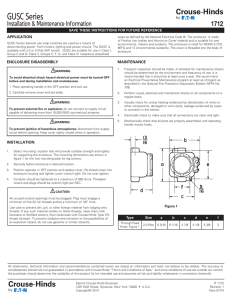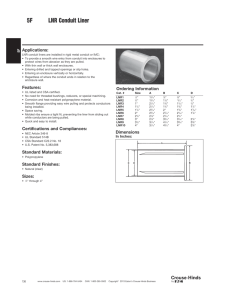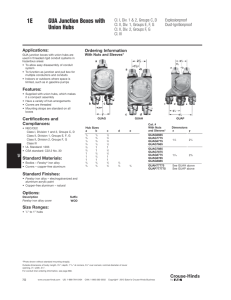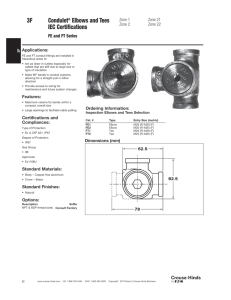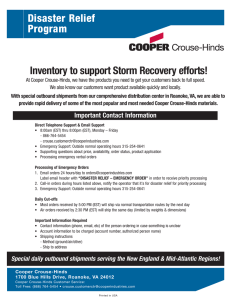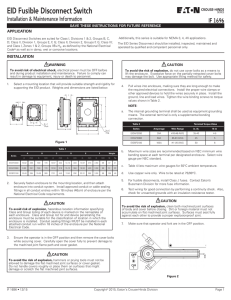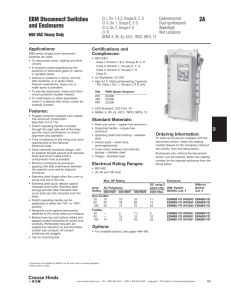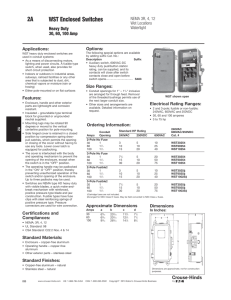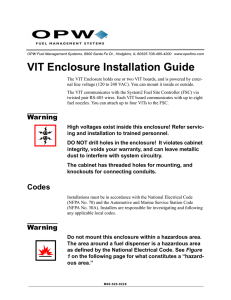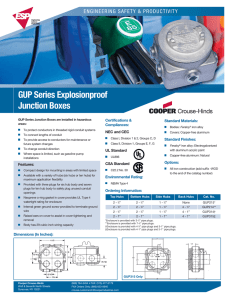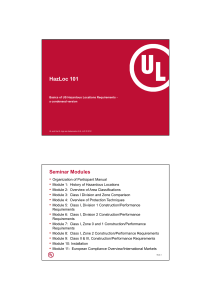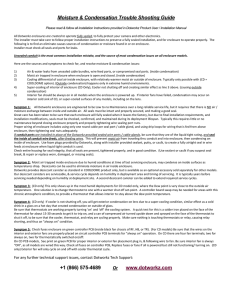GUP Series Junction Box IF 1497 Installation & Maintenance Information APPLICATION
advertisement
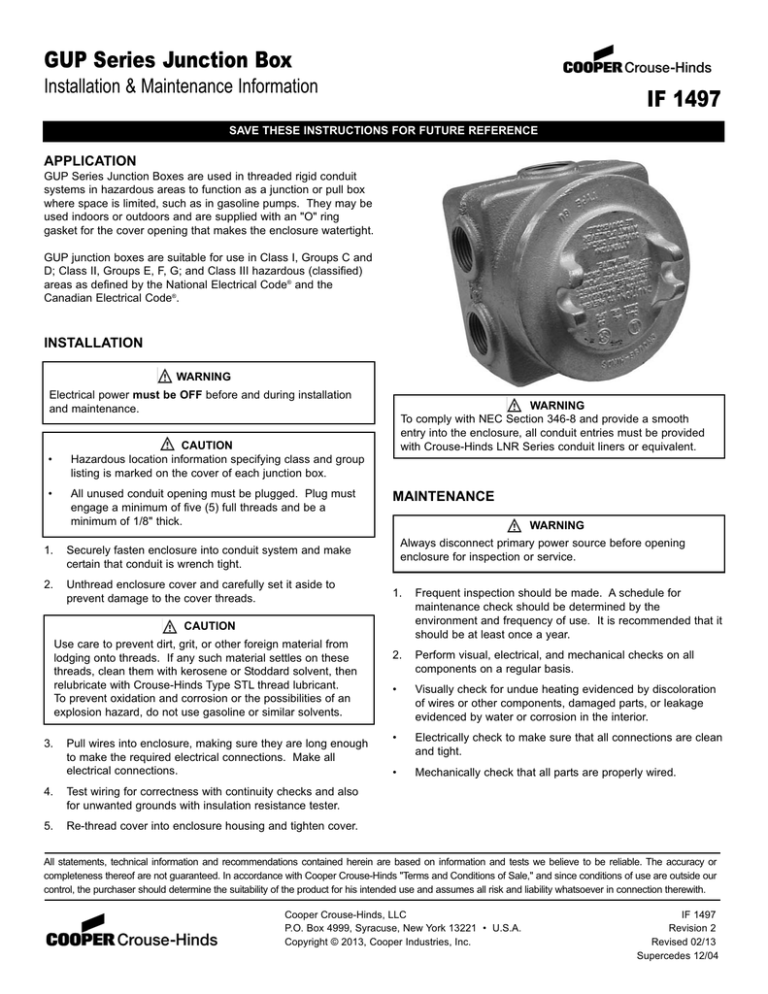
GUP Series Junction Box Installation & Maintenance Information IF 1497 SAVE THESE INSTRUCTIONS FOR FUTURE REFERENCE APPLICATION GUP Series Junction Boxes are used in threaded rigid conduit systems in hazardous areas to function as a junction or pull box where space is limited, such as in gasoline pumps. They may be used indoors or outdoors and are supplied with an "O" ring gasket for the cover opening that makes the enclosure watertight. GUP junction boxes are suitable for use in Class I, Groups C and D; Class II, Groups E, F, G; and Class III hazardous (classified) areas as defined by the National Electrical Code® and the Canadian Electrical Code®. INSTALLATION WARNING Electrical power must be OFF before and during installation and maintenance. • • WARNING To comply with NEC Section 346-8 and provide a smooth entry into the enclosure, all conduit entries must be provided with Crouse-Hinds LNR Series conduit liners or equivalent. CAUTION Hazardous location information specifying class and group listing is marked on the cover of each junction box. All unused conduit opening must be plugged. Plug must engage a minimum of five (5) full threads and be a minimum of 1/8" thick. 1. Securely fasten enclosure into conduit system and make certain that conduit is wrench tight. 2. Unthread enclosure cover and carefully set it aside to prevent damage to the cover threads. MAINTENANCE WARNING Always disconnect primary power source before opening enclosure for inspection or service. 1. Frequent inspection should be made. A schedule for maintenance check should be determined by the environment and frequency of use. It is recommended that it should be at least once a year. 2. Perform visual, electrical, and mechanical checks on all components on a regular basis. • Visually check for undue heating evidenced by discoloration of wires or other components, damaged parts, or leakage evidenced by water or corrosion in the interior. • Electrically check to make sure that all connections are clean and tight. • Mechanically check that all parts are properly wired. CAUTION Use care to prevent dirt, grit, or other foreign material from lodging onto threads. If any such material settles on these threads, clean them with kerosene or Stoddard solvent, then relubricate with Crouse-Hinds Type STL thread lubricant. To prevent oxidation and corrosion or the possibilities of an explosion hazard, do not use gasoline or similar solvents. 3. Pull wires into enclosure, making sure they are long enough to make the required electrical connections. Make all electrical connections. 4. Test wiring for correctness with continuity checks and also for unwanted grounds with insulation resistance tester. 5. Re-thread cover into enclosure housing and tighten cover. All statements, technical information and recommendations contained herein are based on information and tests we believe to be reliable. The accuracy or completeness thereof are not guaranteed. In accordance with Cooper Crouse-Hinds "Terms and Conditions of Sale," and since conditions of use are outside our control, the purchaser should determine the suitability of the product for his intended use and assumes all risk and liability whatsoever in connection therewith. Cooper Crouse-Hinds, LLC P.O. Box 4999, Syracuse, New York 13221 • U.S.A. Copyright © 2013, Cooper Industries, Inc. IF 1497 Revision 2 Revised 02/13 Supercedes 12/04
